Every time we’re to get some type of storm, the media are contractually required — I’m guessing — to use the phrase “hunker down,” to the point that we clearly don’t know what it means anymore. I’m not the only person who’s noticed this silliness either.
There are basically three meanings of the word.
The original, from 1720, is simply to squat down.
That’s Scottish in origin, and that’s not really what we are talking about when the snow flies, though, is it?
There is the 1903 version of the phrase, originating from the United States and primarily used in military contexts: focusing resources, buckling down, and taking shelter.
That’s what I believe those reporters are all suggesting when they toss out the cliché of New Englanders hunkering down before a Nor’easter.
What I saw in the last storm, and during most before that in Hartford in recent memory, is more like cowering.
That’s the 1790 Scottish use of the word — crouching, but in fear.
What other explanation is there for our illogical behavior?
Before the storm ended, people were driving around to go shopping. Not to pick up food or medicine, but to browse for shoes. That’s the kind of behavior that encourages retail stores to force employees into work on days when anyone with an ounce of sense would ask “is the risk worth it?” Of course, we know that with capitalism, those putting their bodies at risk are not top management who have multiple homes and are unlikely to have worked a cash register in decades.
It’s not only our weird hyper-consumerist behavior before and during the storms that makes me think we suck at cowering in the American militaristic sense. Rather than sensibly prepare and respond, we go into mindless stockpile mode, self-soothing with retail, all the while ignoring needs.
I know we aren’t very focused or serious about dealing with snow in Hartford — in many places — because we continue to willingly strand those outside of automobiles indefinitely.
If decision-makers decided that those without driver’s licenses and cars matter, that those who cannot drive due to disabilities — many of whom are elderly — matter, and that those who simply choose to move about by foot because one should expect this option in a city also matter, then we would have a strategy for allowing convenient and safe movement.
But we don’t. Instead, we have a policy that feels more like the “you do you” non-response to Covid that has resulted in people needlessly getting harmed. Sure, on paper, the City of Hartford is supposed to fine property owners who do not clear snow and ice from their sidewalks, but I’ve seen no evidence that this happens. Not where it really needs to, anyway. Think of how time and resource this current practice would be if used anyway. There’s determining who owns the property. Records often have discrepancies, by the way. There’s the tracking them down. Giving them time to get their plow service on site. There’s following up. Sending someone out to verify the snow has been removed. Maybe progress is made over a season, but then that owner sells and there’s a new one and new manager, and we start over. That’s a lot, and obviously Hartford has not been doing this.
It’s generally not the owner-occupant homeowner who is the issue, those of us paying attention know this, and so nobody is really calling to ticket the person on the street who had a cold or hurt their foot. Let’s stay away from straw men, shall we?
The issue is a combination of absentee landlords, businesses, and the government — the State of Connecticut and City of Hartford.
This is my conclusion based on a two-mile commute that is predictably bad in the same places every single time. Were the problem property owners fined, or fined significantly enough, one would expect to see better behavior in future storms. There just hasn’t been. Before I show that proof, I will add that I only see fines as useful for achieving desired behavior (removing snow from sidewalks in a reasonable time so that people can walk, roll wheelchairs, and push strollers on them) and not as a way to stick it to someone. Punishment just to punish is dumb. If you’ve read anything I’ve written here about traffic violence, then you’re already aware of this. I want to see a problem prevented first and foremost. It’s why automated speed and red light enforcement as a stopgap is preferred over face-to-face policing. With one, an infraction is caught every time. Someone who knows they can’t get away with it is going to be more likely to do the correct things; whereas, someone who knows police can’t be everywhere and are likely not going to catch them will gamble on it. This brings us back to our current policy which is one that the deadbeats will gamble on.
First, the evidence, and then, suggestions for how we can do better.
From the first snow event of the 2023-2024 season which began on Saturday, January 6 and ended on Sunday, January 7, 2024 let’s start with how the City of Hartford can’t manage its own properties.
On Monday morning (1/8), the Burns School sidewalk looked like this:
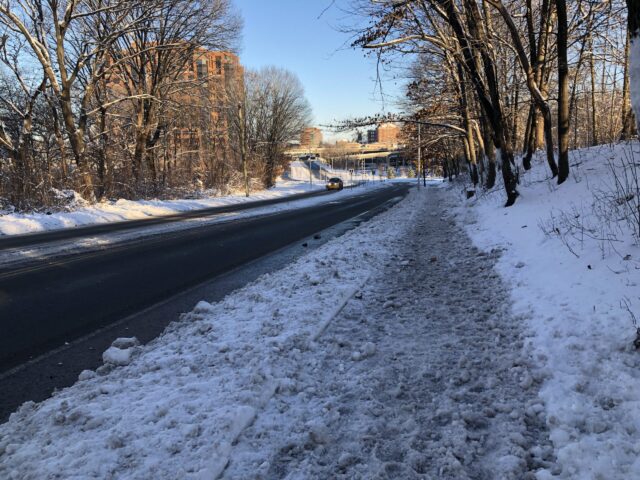
The race track of Park Terrace was cleared well enough for drivers to speed up it at 45 MPH, but an elementary school sidewalk wasn’t plowed.
The sidewalk across the street — along Pope Park, so also a City of Hartford property — hadn’t been touched.
Plows had pushed snow out of side streets, blocking crosswalks and curb ramps, rendering bus stops dangerous or impossible to use.
If the City of Hartford could not clear a sidewalk by an elementary school in one of the neighborhoods with the lowest rate of car-dependency, what were the odds that the rest of my work commute would be better? I packed it in, took a personal day, and sent 311 a message on Twitter.
Why blast them?
- It’s not blasting. It’s asking the City of Hartford to take action and they have a Twitter account. Why be on social media if you aren’t going to engage? When I post there, I at least get acknowledgment from 311 about 90% of the time; on the app, well over half my reported issues were ignored entirely.
- They removed the possibility for there to be an ongoing public record of resident concerns when they unceremoniously ditched their app last month. We deserve transparency when it comes to what’s being reported and how the City says it’s responding.
- I want to encourage other residents and users of Hartford’s sidewalks to share the conditions that they are encountering. Nobody is served when the image distributed is of a few politicians shoveling sidewalks for the elderly in one neighborhood . . . while the majority of the city does not get these services.
- Very often, posting concerns on social media and tagging 311 is what gets the goods.
It was sort of true for this case, as this portion of the sidewalk was cleared later on Monday.
I set back out for work on Tuesday (1/9), two days after the storm ended, and had some false hope. The Burns School sidewalk and the one across the street were cleared but the bus stop was still blocked because the City never removed the snow its plow drivers pushed across the crosswalks.
And then, I reached the roundabout.
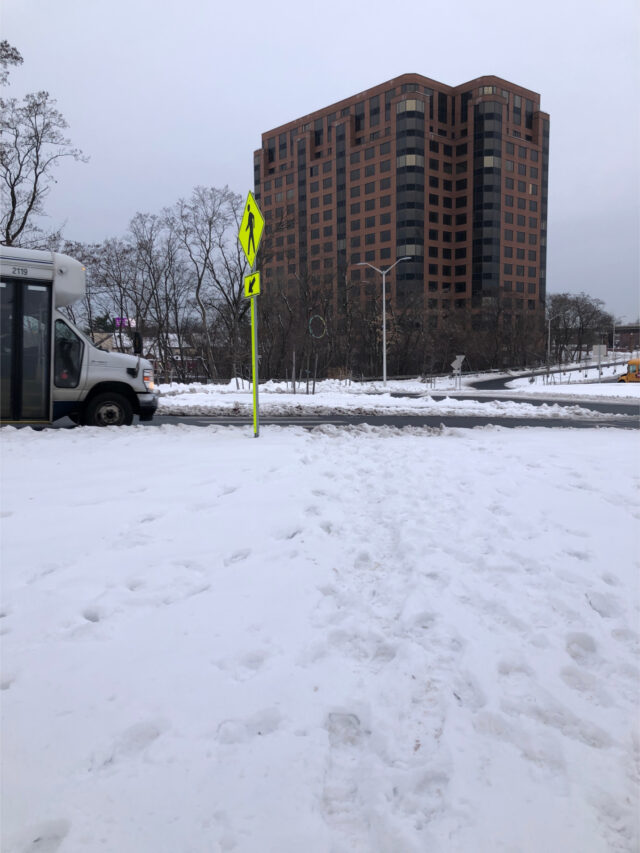
This is also up to the City of Hartford to clear, and yet, they hadn’t.
Do people who work in plowing not understand how sidewalks work? Only asking because every single year, this is how it goes.
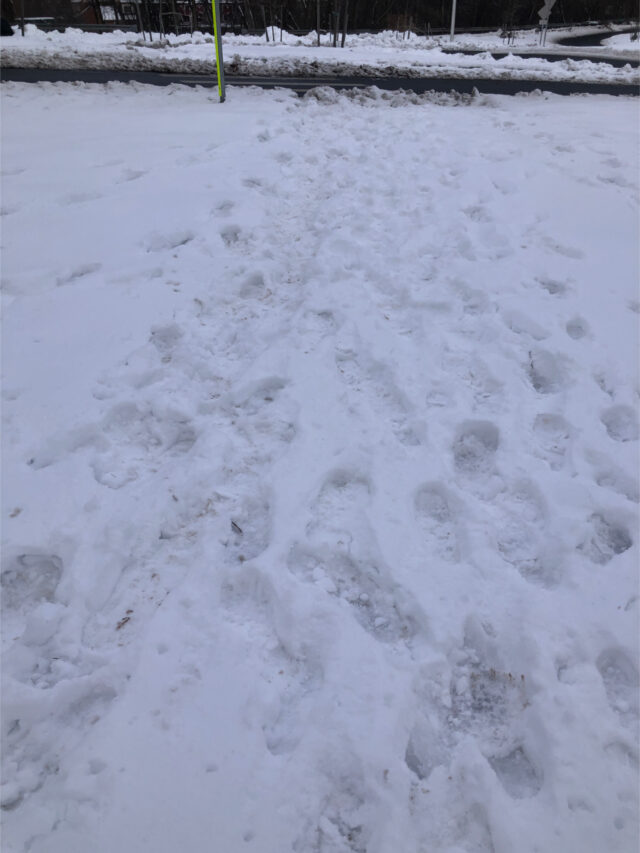
I thought after the first snow season, they would have figured out that the roundabout requires plowing, both the sidewalks and the crosswalks that go through the medians.
Do people think those kids are just doing laps around the school?
You can see from all the tracks in the snow that this area gets a lot of use. Why? Because children are walking to school from points in Asylum Hill and this is the most direct route.
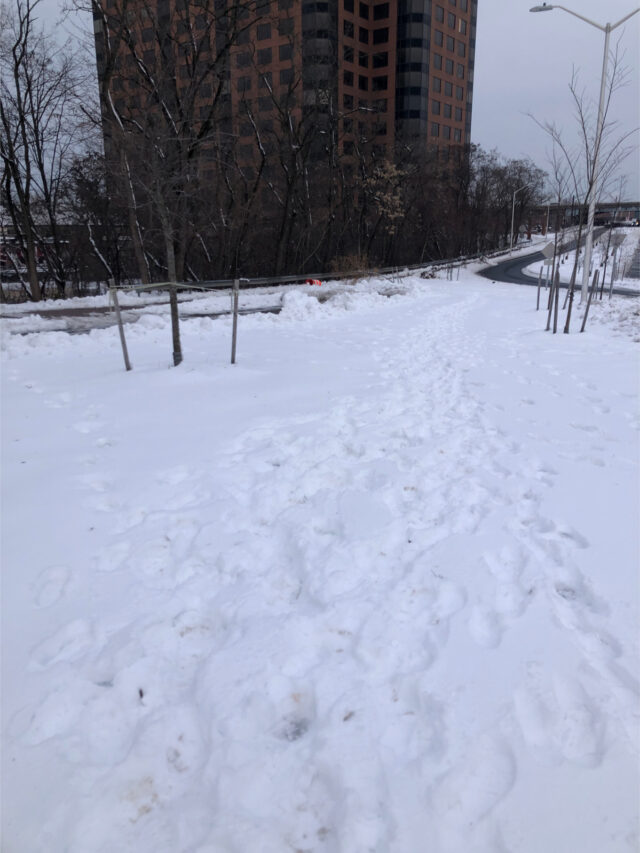
The roundabout is lovely, but it fails in a lot of ways when it’s only marginally useful for pedestrians.
Once again, I got back to 311 to show them what had not been touched in the 36 hours after the last snowflake fell.
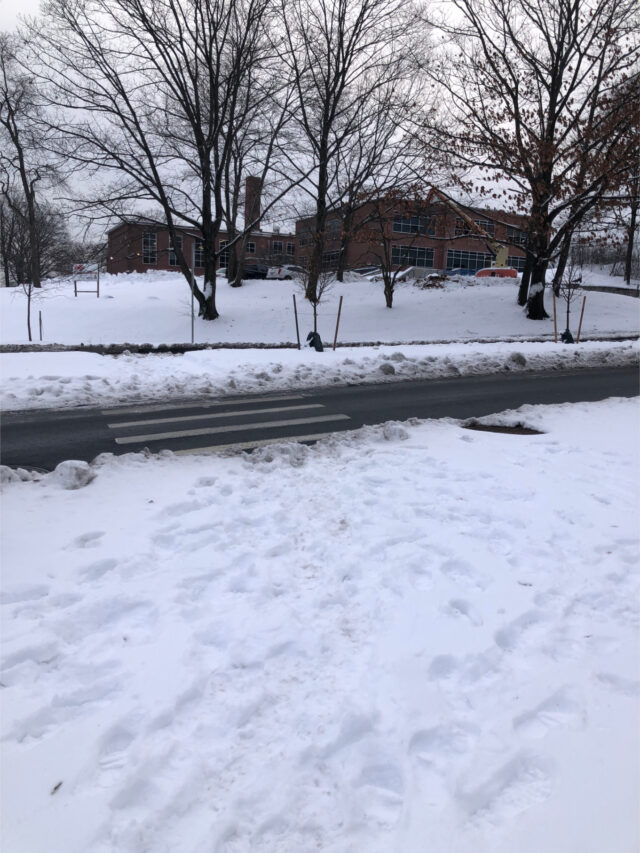
They assured me that it would be addressed.
(You can see in the photo below a damaged tree that was reported a month ago to 311 and also still not addressed)
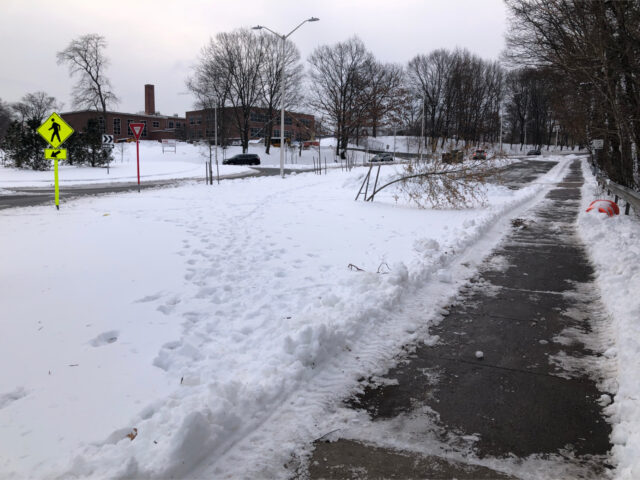
It wasn’t.
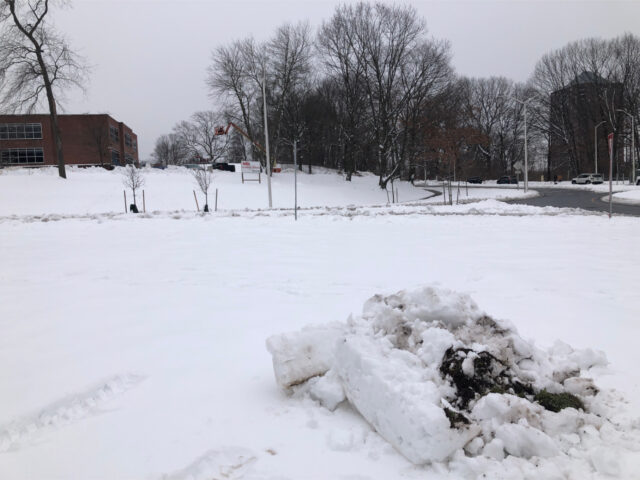
There should be a sidewalk cleared here across from the school. This is what it looked like later in the afternoon. This is four commutes to school that kids had to do without cleared paths.
What happened with the school access? We’ll get back to that.
I still had several miles of commute to do on Tuesday, and it looked like this:
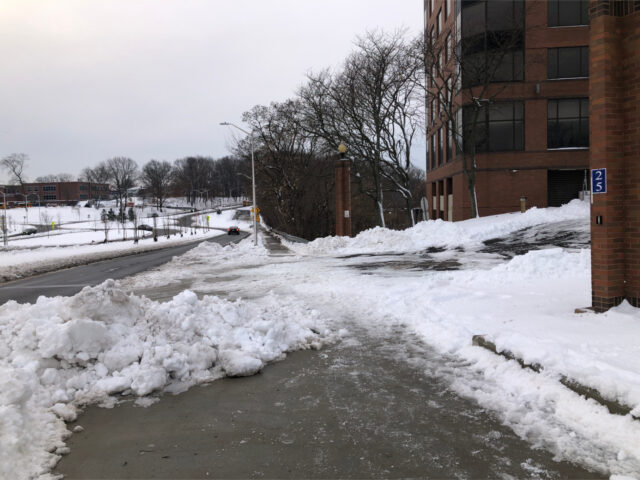
(Above: 25 Sigourney Street — Spartan Towers LLC, repeat offenders.)
It looked like property owners clearing their driveways and leaving snow on the sidewalk. It looked like property owners clearing their sidewalks and leaving piles at property lines, because who cares if pedestrians need to go somewhere.
It looked like a lack of care for human beings.
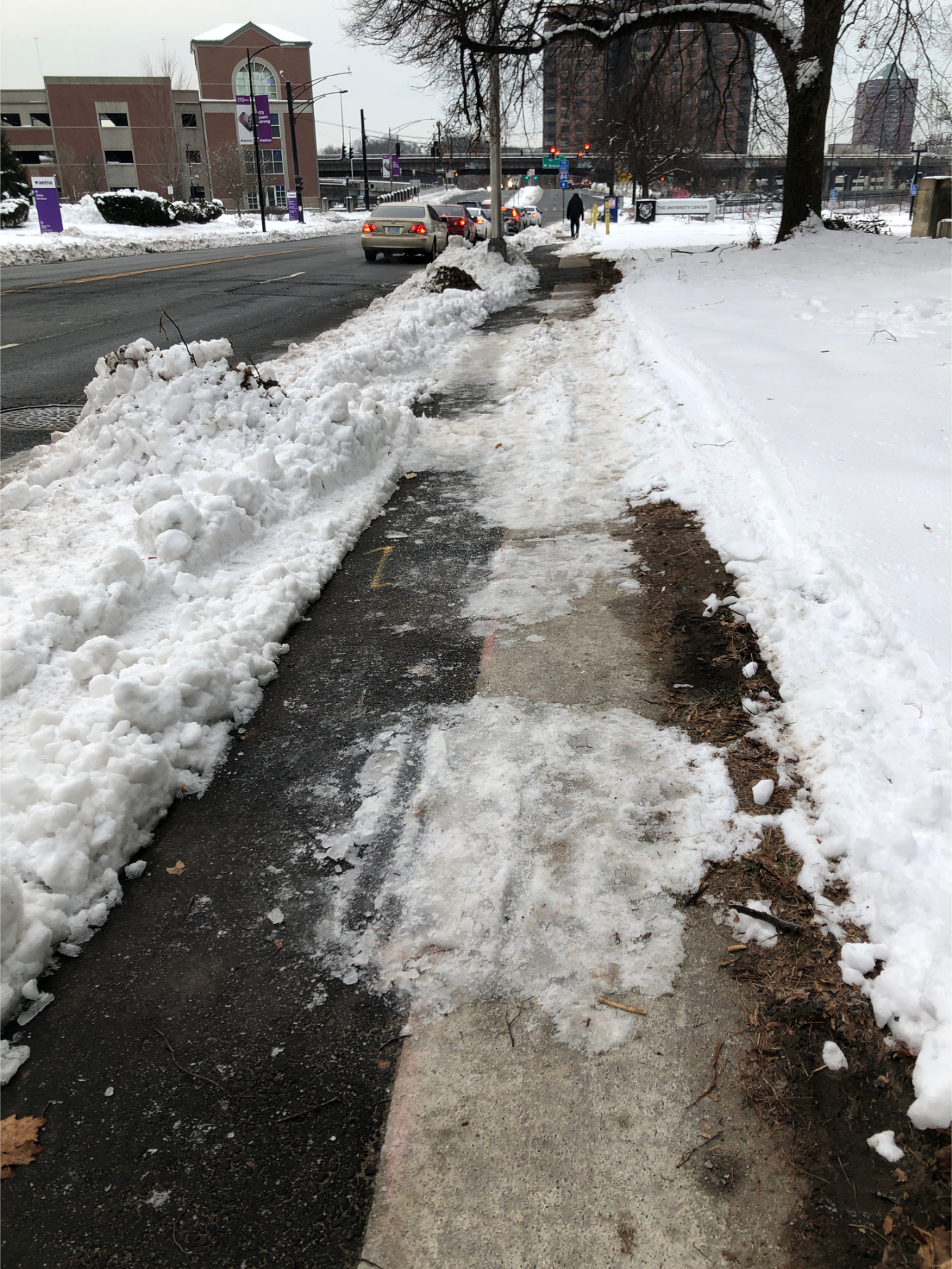
(Above and foreground below: 85 Sigourney Street, 85 Sigourney Holding LLC. That’s the former Culinary Institute building.)
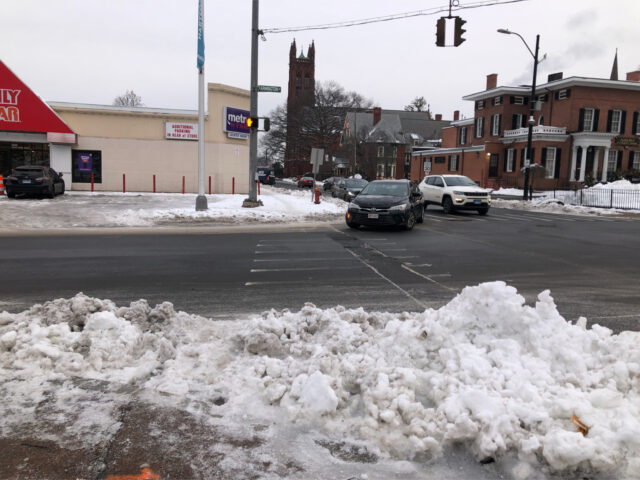
It looked like corporate greed.

(Above and below, 190 Farmington Avenue owned by Mastriani Realty LLC.)
Who allows their sidewalk — one used by families walking to two nearby schools and a preschool — to be completely uncleared and untreated two days after a storm ends?
You can see people being forced to make the decision between falling on ice by remaining on the sidewalks, or getting hit by a car by walking in the cleared street.
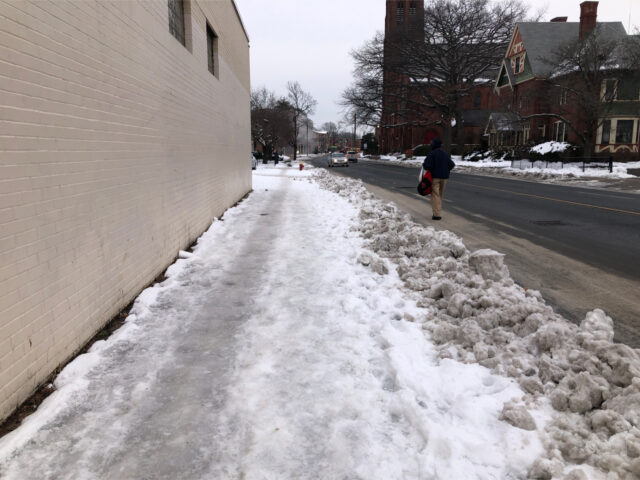
Two days after the storm had ended, KNOX Parks Inc. had not plowed either of its sidewalks at 17 Niles Street. Only asking for one to be accessible, folks! You can see its proximity (below) to West Middle School.
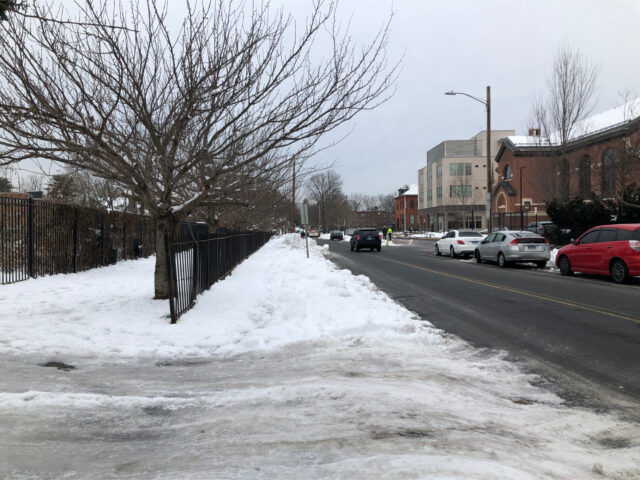
What would be their motivation?
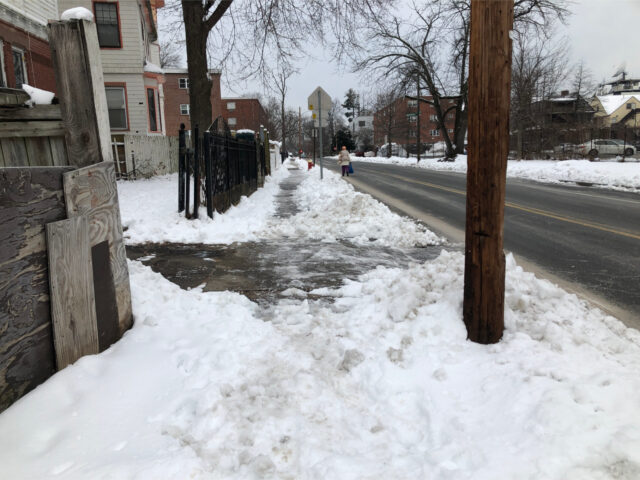
Most of Niles Street (above and below), two days after the last flake fell, pushed pedestrians out into the street because so few property owners had cleared their sidewalks. In the photo below is a person in a blue coat. That is a child walking to school in the roadway.
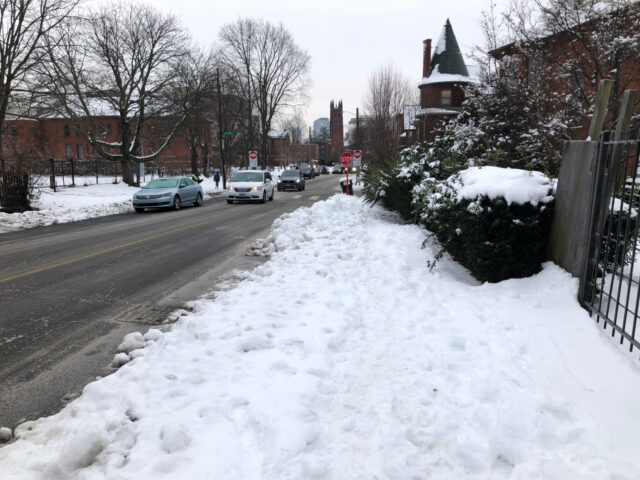
Niles Street is not a very long road, yet it felt infinite because of the lousy shoveling.
Below, you can see the corner apartment building that always has trash outside of its dumpster being predictably neglectful. The sidewalk after that looks impressively cleared. There was salt and everything. But, there was one big problem: that property owner — Mutual Housing — pushed its snow across, instead of off the sidewalk, creating a barrier.
(Below, 69 Gillett Street, owned by HART4 LLC. Next to 95 Niles Street, owned by Mutual Housing Association of Greater Hartford)
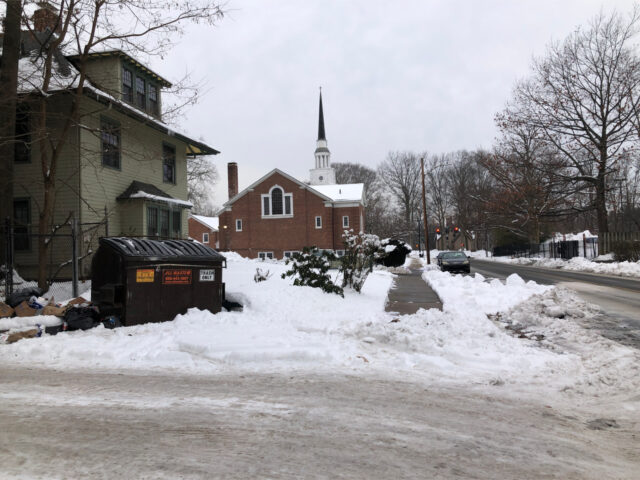
Now, after all that, someone with less experience might expect the rest of their commute to be smooth sailing since most of the remaining properties are owned by either the State of Connecticut or City of Hartford. If you walk down the north side of Capitol Avenue from about Park Terrace to Broad Street, those sidewalks are typically gleaming. They’re plowed early. They’re salted. Fantastic. Those State of Connecticut properties are managed well.
That does not translate to State of Connecticut properties everywhere.
Below, 61 Woodland Street owned by State of Connecticut — the former site of Capital Community College. The building is currently used, yet this is how their sidewalk looked two days post-storm. It appears to have gotten one pass, but never fixed after the plows tossed snow from Asylum Avenue onto the sidewalk. That it’s possible for plows to not do this is another conversation.
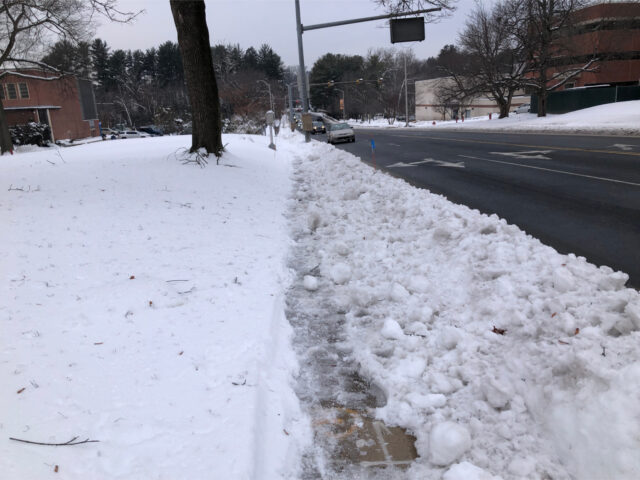
If this feels exhausting to read, imagine what it is like to walk on it. This took 20 minutes longer than usual, and again, I cannot say this enough, these were the conditions for pedestrians two days after the storm ended. Not five minutes. Not ten hours. Two full days.
So, that brings us to the Park River bridge.
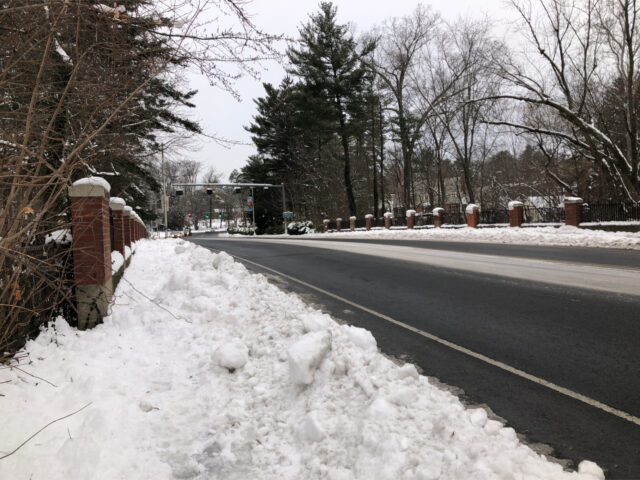
Although one would expect the City of Hartford of all property owners to have cleared one of its bridges, I didn’t. Before I set out, I even made a bet to myself about it. (Side note: they aren’t even sure if this is City of Hartford or State of Connecticut based on conflicting records, so that’s fun.)
This bridge has extremely degraded surface conditions that have been unmanaged despite multiple residents sending in numerous reports for over a year. There is no way that this City of Hartford property meets ADA sidewalk requirements on a good day.
Tuesday was not a good day.
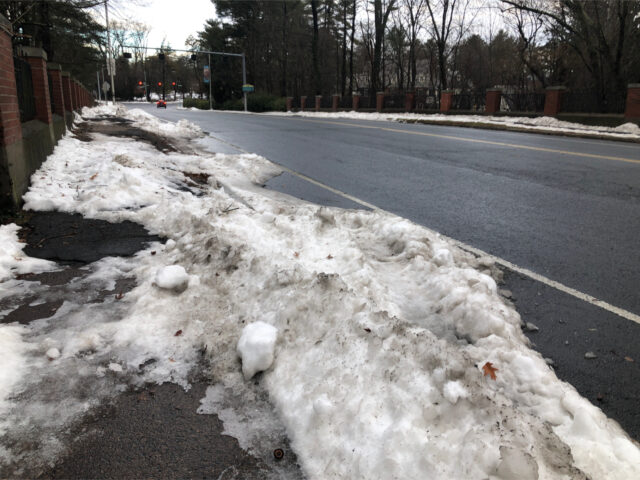
Neither was Wednesday, Thursday, or Friday morning.
Below, you can see the choice I keep mentioning: do we get hit by a car or fall on the ice? This photo was taken later in the week, after the rain and the warming.
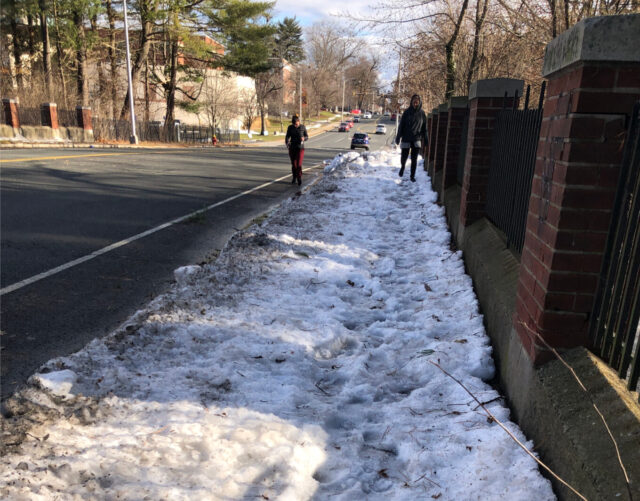
Perhaps others notified them as well, but I contacted 311 about this on Tuesday, twice on Wednesday, on Thursday, and then Friday morning. If I wanted to nag someone five times to do something that should have happened days ago, I would’ve had kids.
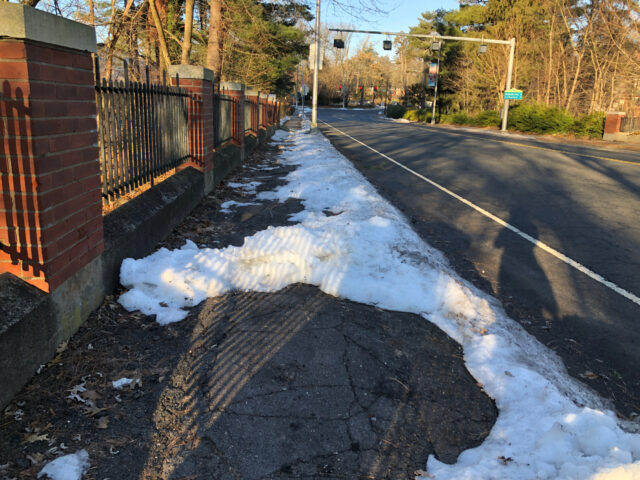
They finally “cleared” it sometime on Friday after morning rush hour. It was too underwhelming to photograph. It still would not meet ADA regulations, but those who are walking without assistance, without pushing strollers, and without lugging grocery carts have something more usable. Until the next storm.
Here’s the thing: it rained hard and warmed up on Tuesday night. So, even though I began reporting problems on Tuesday and nature managed some problem areas, you could tell who still had not bothered because in spite of the rain and the higher temps, a lot of snow remained.
Below, you can see how the roundabout by the Burns School was never plowed. The pile of snow in the sidewalk remained after the rain, as did the blocked curb ramp at the end of the sidewalk.
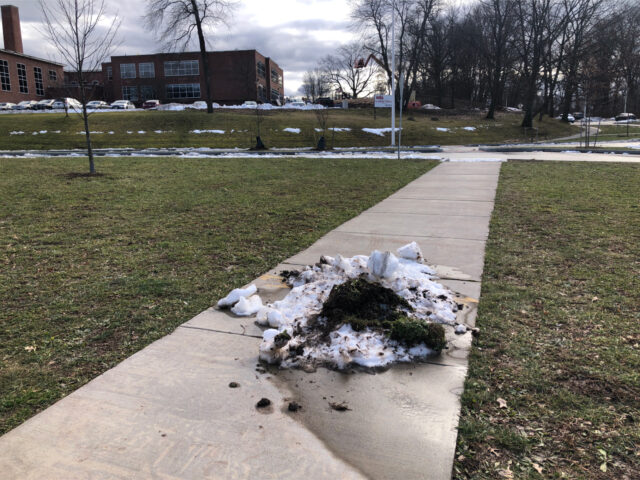
The mentality of “just go around” or “just step over it” is held by those who never consider differing ability levels. Even when someone could get over this with effort, they’re being asked to stand in a street longer than necessary while they get their chair/stroller/cart wheels through the pile.
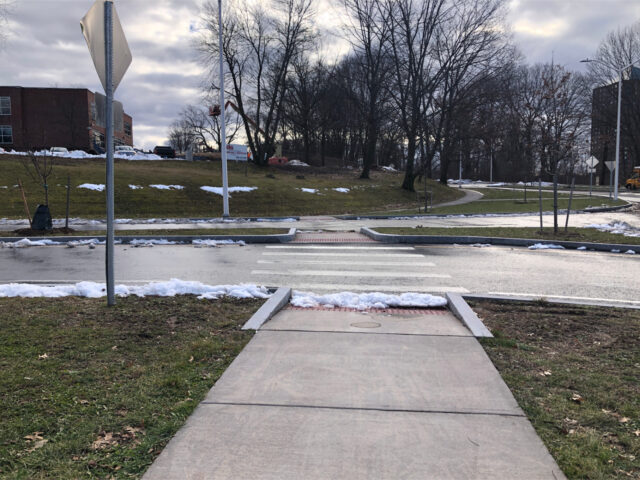
On Friday, five days after the storm ended, the sidewalk at 369-379 Farmington Avenue (below, owned by Mark Twain Apt LLC) looked like this — curb ramp blocked, most of sidewalk blocked, access to beg button blocked. It’s disrespectful to those living in these buildings, to those walking to the bus stops, to those working nearby.
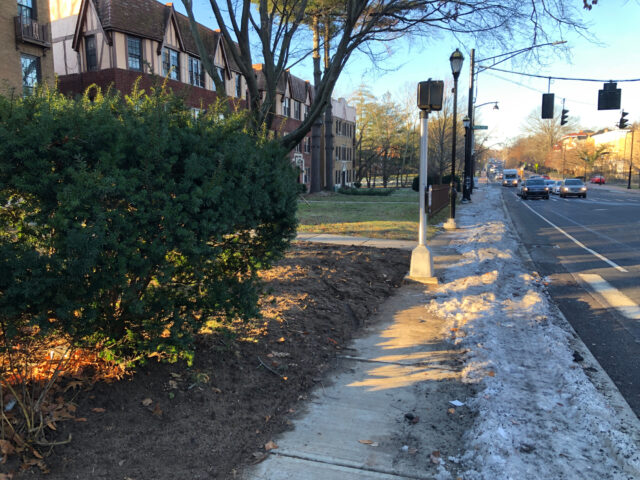
Every year, the same. We can’t simply blame the New Mayor. This was the same under Bronin, Segarra, and Perez. Probably before that too.
But, we can’t excuse the New Mayor, either. He’s already proven himself to be a better communicator than his recent predecessors. This is a chance for Mayor Arulampalam to distinguish himself as someone who gives thought to how all city residents can safely move about.
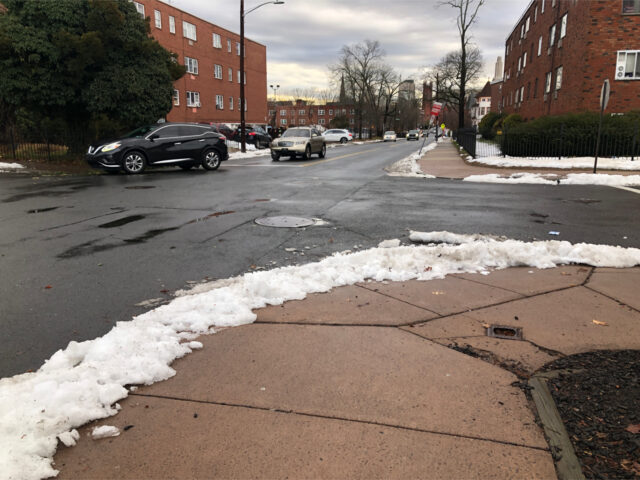
There are two paths, as I see it, that we could take going forward.
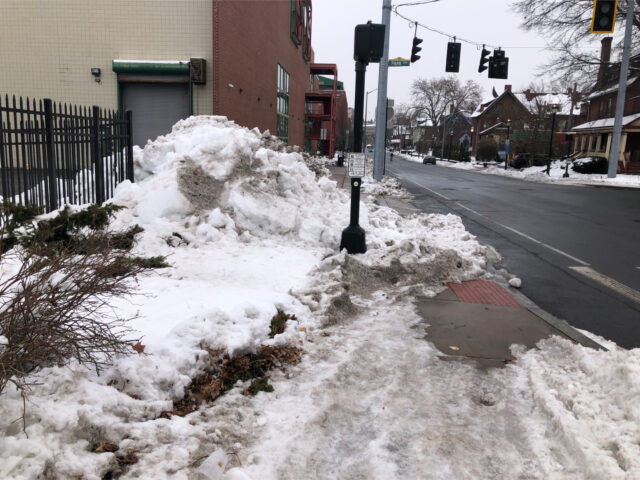
The first would involve keeping our sidewalk snow removal policies as is but changing our street clearing policies to match.
In other words, we would eliminate plowing services provided by the City of Hartford and State of Connecticut. Every property owner would be responsible for plowing/shoveling the portion of roadway that is directly adjacent to their property.
This is currently the system that pedestrians have to work with, and if it’s good enough for us to endure, then it’s good enough for drivers.
Sure, there would be people who aren’t compliant, but that’s a fantastic opportunity for property owners to help others by shoveling or plowing. Otherwise, let everyone plow their own work commutes. Those who ignore their duties will be fined, maybe, and anyway, it won’t be cold forever. Just wait for the snow to melt.
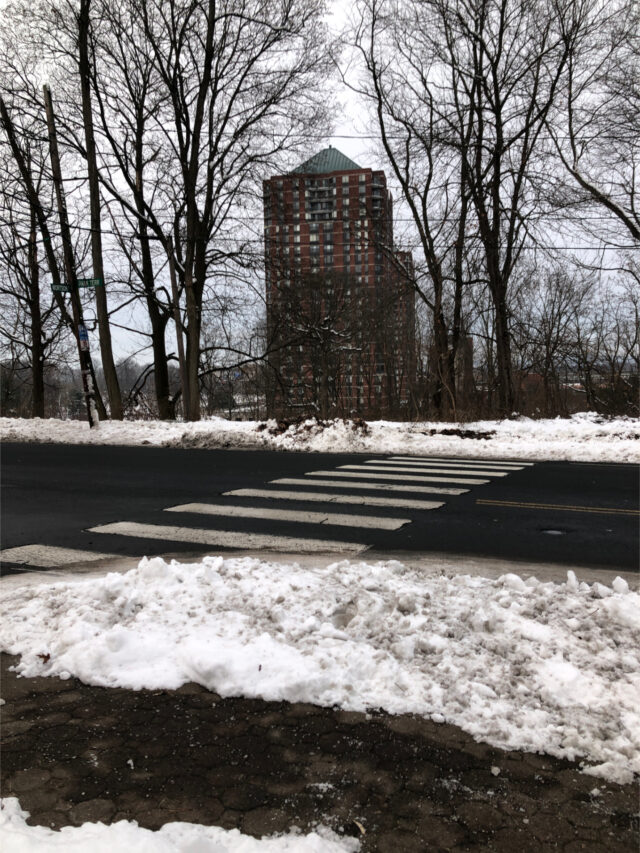
What could possibly go wrong?
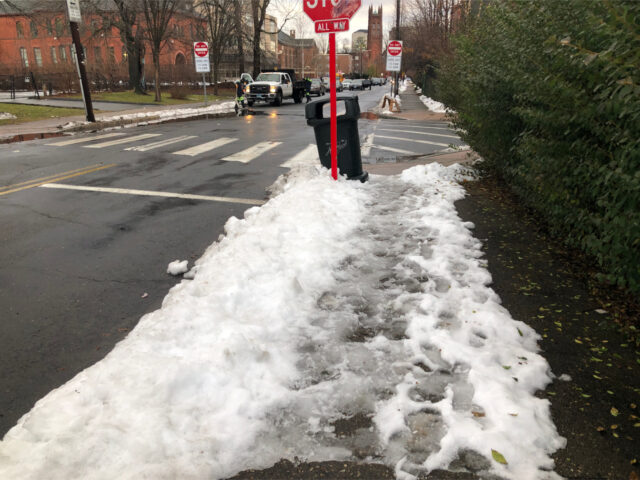
The second way forward, however, is an actual way forward.
This would mean changing the sidewalk clearing policy to match that of what we currently do to benefit motorists. Either the State of Connecticut or City of Hartford would be responsible for removing snow from all sidewalks in Hartford. This would extend to bus stops, along with removing snow from blocking curb ramps and maintaining crosswalks through medians.
This would enable people freedom of mobility that does not depend on their ability to pay for or willingness to go into debt for an automobile. Those who cannot or do not drive would be able to walk to the store, to the bus stop, to their jobs, and to school with improved safety and dignity. They won’t be forced to decide between risking a potentially deadly collision with a vehicle or a slip-and-fall on an uncleared sidewalk, or not being able to use the sidewalk at all if they are using a mobility device or pushing a stroller. People will be able to walk their dogs or go for a jog without undue hassle.
We would function like a society.
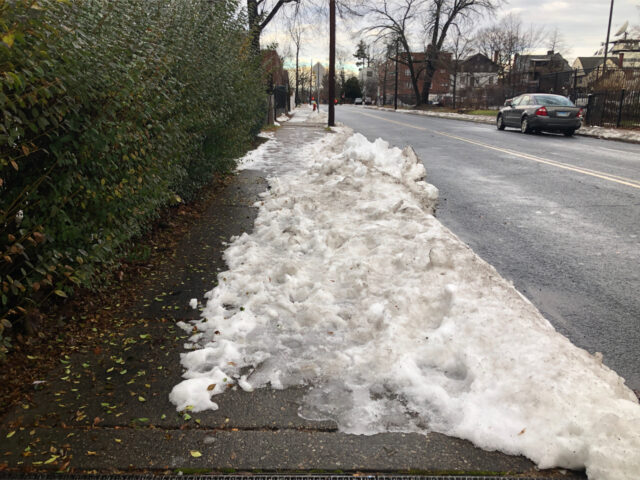
Of course there’s an expense, but so also is there for clearing the roadways and we always manage to do that. We can reimagine our approach to street plowing at the same time. It’s not a badge of honor to clear streets curb-to-curb when our roads have almost all been overbuilt with widths that enable reckless and fast driving. Losing a few lanes on many roads would be an improvement to safety. If that means traffic becomes frustratingly slow for those contributing to traffic, it’s an opportunity for those motorists to reassess their excuses for not taking public transit.
If we ditched our current inequitable business-as-usual approach, nobody need to worry. Hartford wouldn’t be a trailblazer. Others are already doing it.
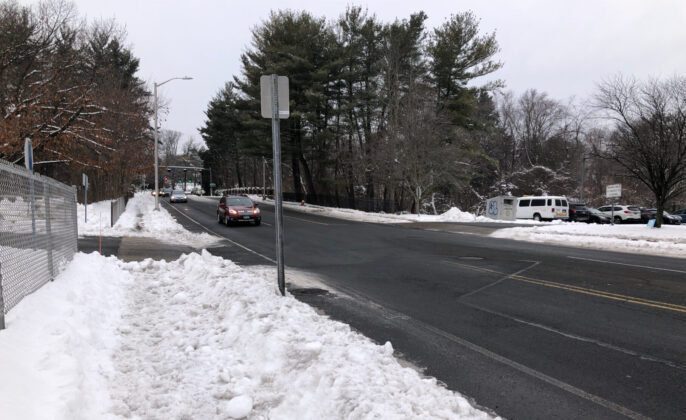
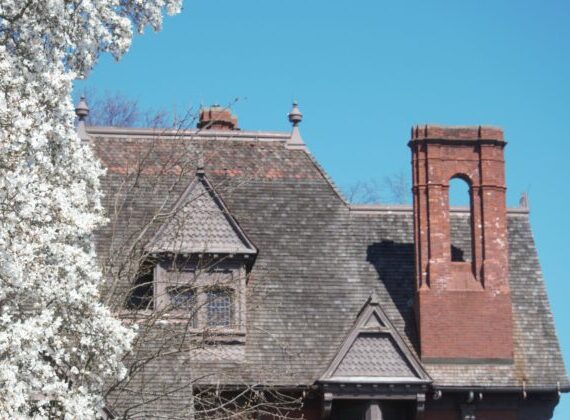

Richard Nelson
Disgusting to say the least. I lived in Hartford for 42 years and we fought every winter with folks at City Hall, homeowners, businesses in downtown to clear walks, curb cuts (still a no-persons land) bus stops, and everything else that should be cleared after a snowstorm. We were met with all sorts of excuses. Shame on this city for its disregard for its people, and its lies. This problem just shows, to me anyway, that we will never function as a society or as civilized peoples. I do hope any Christians in the crowd of ill doers remember the idea of the “least of these.” Powerful and surly a warning to be careful on NOT correctly approaching problems such as this.
Kerri Ana Provost
By no means is it only Hartford doing this, but here Hartford has an opportunity to be a leader and change its direction.
I’m reminded of the gross practice during elections of driving people to the polls. In urban areas, we have buses, and our bus system *should* be able to get everyone to voting booths. Instead, we have campaigns doing “favors” for people and it looks like this — driving an individual to the polling place, shoveling an individual’s sidewalk and having a photo op of it. These seem like two very different issues, but they’re not. Our system should consistently work for everyone.
Sarah Roy
Glorious piece! Thank you for laying it all out for us with fire, grace, and tenacity.
Rex Fowler
Wow. Good analysis Kerri. Sidewalks on my block in the north end are equally dismal – about 50% shoveled/passable for pedestrians, & you’re right – most of the ignored sidewalks are absentee landlords or church-owned properties. Maybe ramping up the blight team & including this as a fineable event could both spur property owners to do their jobs & bring in enough $ to the city to increase their team so they can do a better job w/ their own properties.
Maggie Gibbons
I finally left Buffalo, NY and will never live in snow again. Just had to stop beating my head against the wall (and a few times the sidewalk). I’m a pedestrian. I shoveled, used the app, documented, testified, met with city department heads, sat on mayor’s committees but every snowfall just verified that there is no societal support for someone who does not drive a car. The city could not even get its own properties shoveled. The current processes just break down.
It is so frustrating and disheartening.